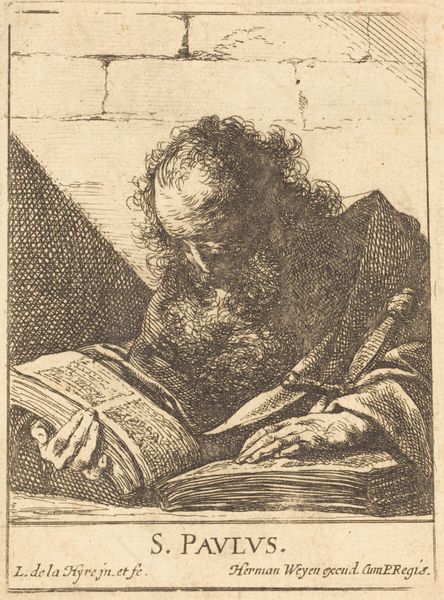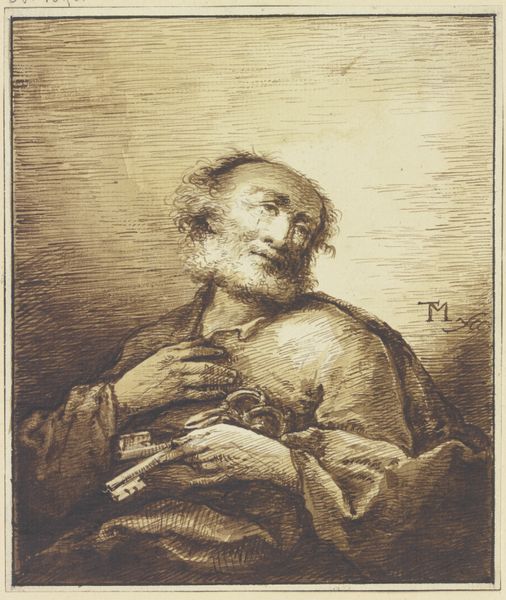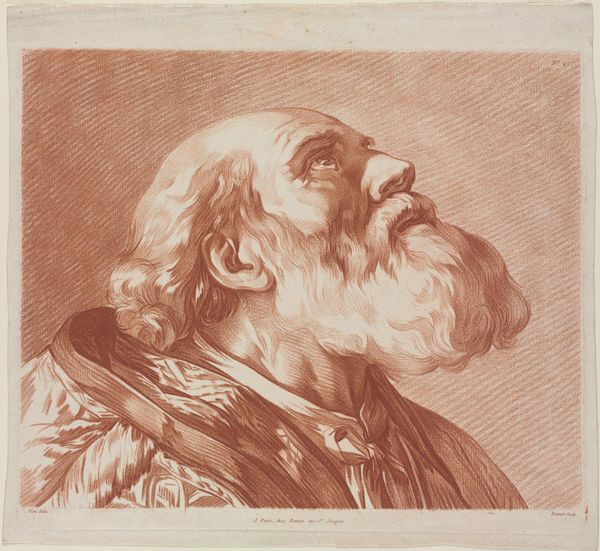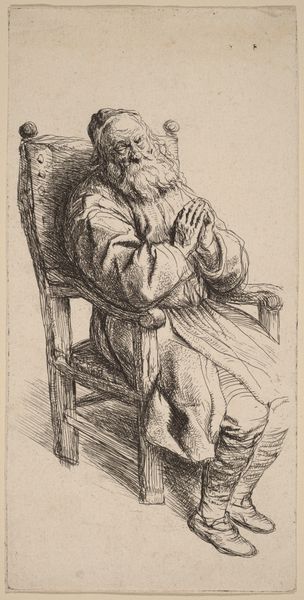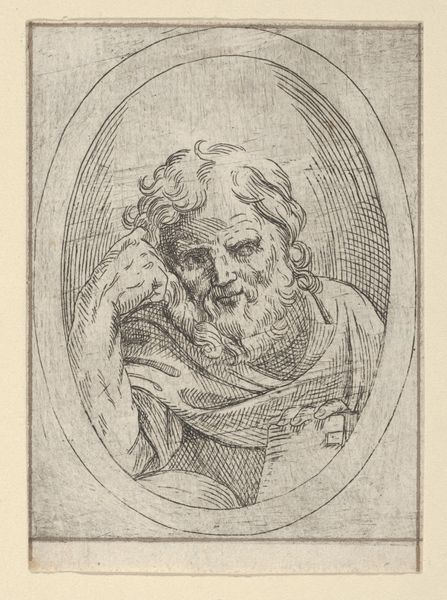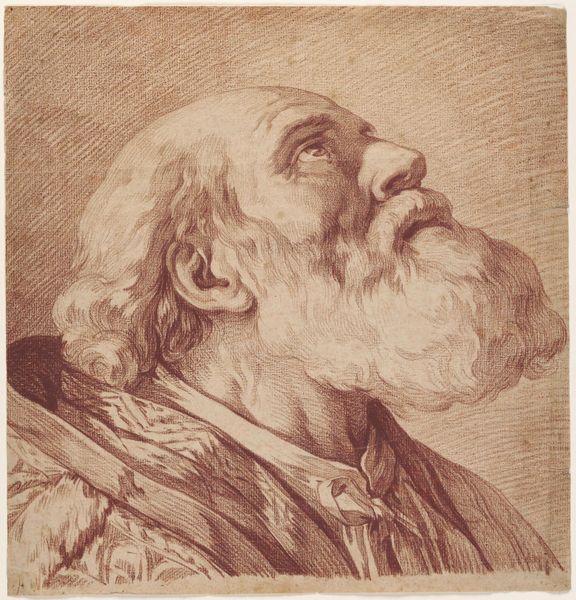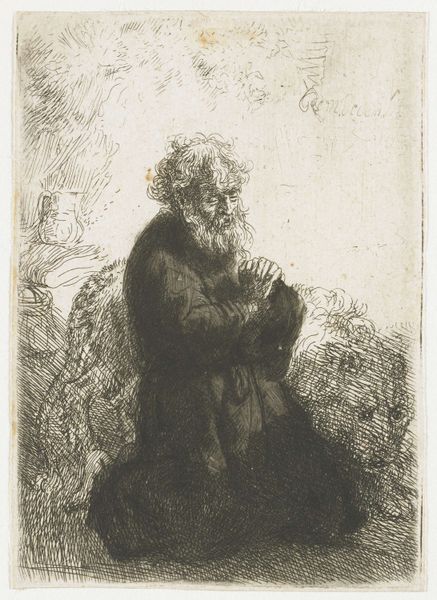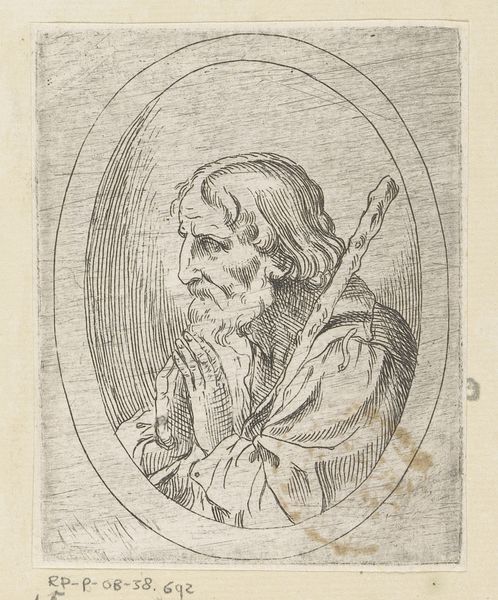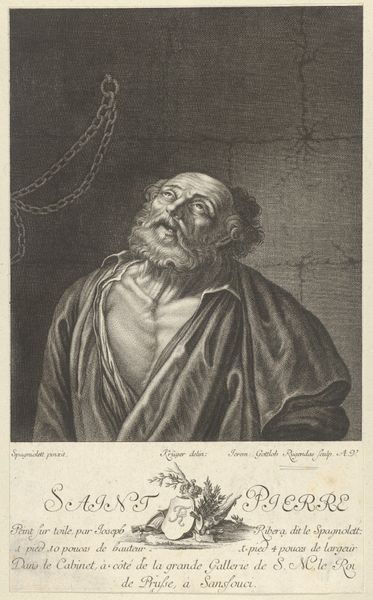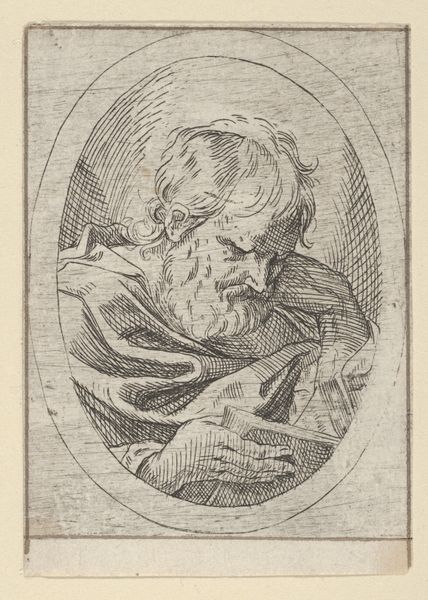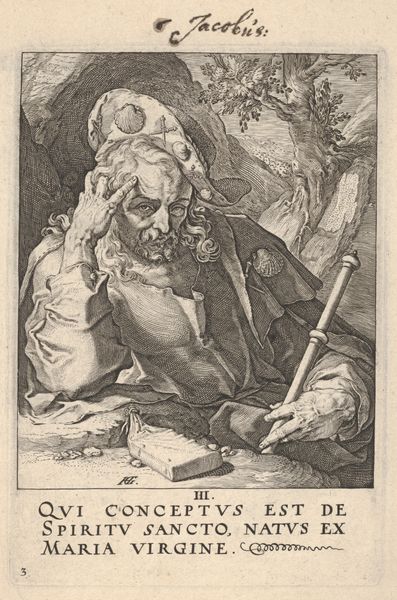
drawing, print, engraving
#
portrait
#
drawing
# print
#
charcoal drawing
#
pencil drawing
#
engraving
#
realism
Dimensions: sheet: 13.5 × 11.8 cm (5 5/16 × 4 5/8 in.) plate: 10.9 × 9.6 cm (4 5/16 × 3 3/4 in.)
Copyright: National Gallery of Art: CC0 1.0
Curator: Gazing up, his wrinkled face is full of ardent longing. There's a gravitas that pulls you into his interiority immediately. Editor: It does have an arresting, almost theatrical quality. This is "Bust of a Saint," an engraving made circa 1775, attributed to Gaetano Gandolfi. Curator: Note the use of line— it seems almost hurried, frenetic— giving a texture of spiritual agitation, wouldn't you say? Gandolfi really captures the energy of inner turmoil. He's using the hatching almost as an iconographic code for intensity. Editor: Absolutely, and look at those hands clasped around the rosary! Given the historical context, could this be interpreted as a response to Enlightenment critiques of religious dogma, perhaps even resistance to those secularizing forces? Is he an everyman Saint clinging to tradition? Curator: Possibly! The Church's relationship with science and reason was, after all, a major point of tension. But I also read it more personally: it's the timeless human struggle with doubt and faith, presented without baroque trappings. It is quite modern, in a way. Editor: Yet he's literally a "Bust"—a fragment, representing not wholeness, but incompleteness; the Saint as an unfinished project. Considering how many of these 'Old Master' depictions only valorize powerful, often wealthy men, what kind of sanctity are we talking about here if the engraving centers this incomplete being? Is that itself a statement? Curator: You’ve raised an interesting point about the traditional portraiture in that era... However, focusing again on visual symbolism, observe his gaze. It's pointed upwards toward the divine, or perhaps at least towards contemplation. The wrinkles narrate experience etched into skin, bearing the weight of spiritual toil. Editor: In art history, context is always vital, isn’t it? I now consider it through a gendered lens—a male figure rendered in anguish... It disrupts traditional stoic masculinity in religious depictions of that period. So maybe Gandolfi wasn’t simply drawing from piety. Maybe he offers a nuanced, more relatable expression of faith through a break from artistic traditions. Curator: Gandolfi certainly created a striking and lasting image by embracing realism over idealization. It prompts contemplation across eras. Editor: For sure, an amazing dialogue with art, history and, above all, humanity.
Comments
No comments
Be the first to comment and join the conversation on the ultimate creative platform.
